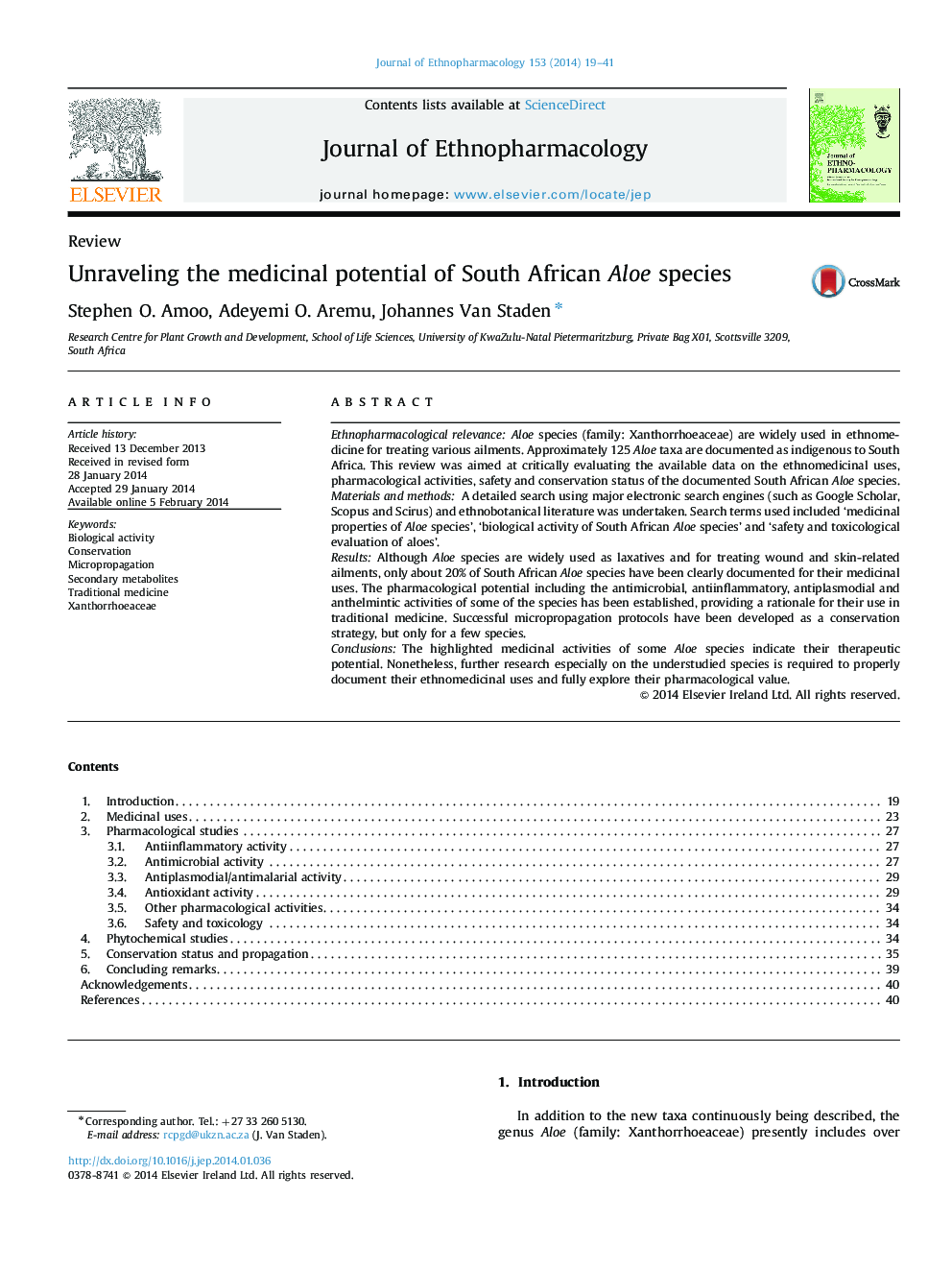| کد مقاله | کد نشریه | سال انتشار | مقاله انگلیسی | نسخه تمام متن |
|---|---|---|---|---|
| 2545367 | 1123952 | 2014 | 23 صفحه PDF | دانلود رایگان |
Ethnopharmacological relevanceAloe species (family: Xanthorrhoeaceae) are widely used in ethnomedicine for treating various ailments. Approximately 125 Aloe taxa are documented as indigenous to South Africa. This review was aimed at critically evaluating the available data on the ethnomedicinal uses, pharmacological activities, safety and conservation status of the documented South African Aloe species.Materials and methodsA detailed search using major electronic search engines (such as Google Scholar, Scopus and Scirus) and ethnobotanical literature was undertaken. Search terms used included ‘medicinal properties of Aloe species’, ‘biological activity of South African Aloe species’ and ‘safety and toxicological evaluation of aloes’.ResultsAlthough Aloe species are widely used as laxatives and for treating wound and skin-related ailments, only about 20% of South African Aloe species have been clearly documented for their medicinal uses. The pharmacological potential including the antimicrobial, antiinflammatory, antiplasmodial and anthelmintic activities of some of the species has been established, providing a rationale for their use in traditional medicine. Successful micropropagation protocols have been developed as a conservation strategy, but only for a few species.ConclusionsThe highlighted medicinal activities of some Aloe species indicate their therapeutic potential. Nonetheless, further research especially on the understudied species is required to properly document their ethnomedicinal uses and fully explore their pharmacological value.
Figure optionsDownload high-quality image (283 K)Download as PowerPoint slide
Journal: Journal of Ethnopharmacology - Volume 153, Issue 1, 11 April 2014, Pages 19–41
